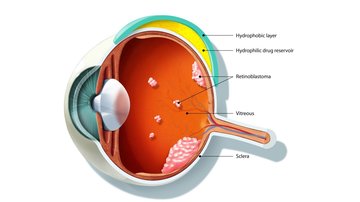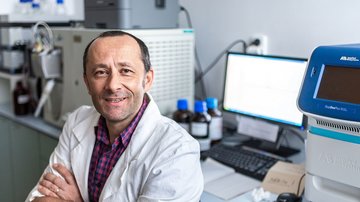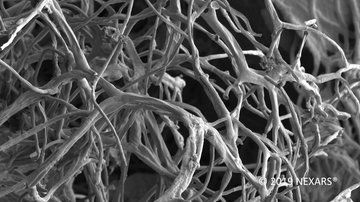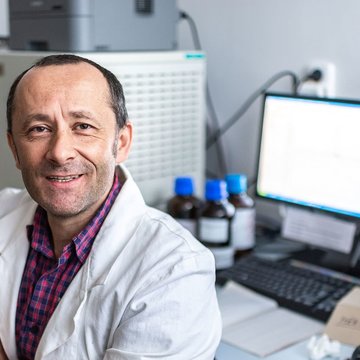
Clean Room Laboratory
From Chemistry to Medicine (and Back)
The Biomaterials and Tissue Engineering Programme of the BIOCEV Centre is presented by its head Dr. Tomáš Etrych.
We have presented three research programmes from the BIOCEV Centre on the pages of Vesmír: Functional Genomics, Cell Biology and Virology, and Structural Biology and Protein Engineering. The fourth programme, Biomaterials and Tissue Engineering, is now being presented by its head, Dr. Tomáš Etrych.
What do all the projects in the programme have in common?
The programme brings together research groups working in different fields. Chemists, biochemists and chemical engineers prepare new biomaterials that biologists and physicians work with to explore their potential forms of use.
Together, we strive to find links between the structure of a material, its function and its use in biological research and medicine. From basic chemical syntheses through biology and medicine, we are working towards developing products with potential for practical application.
So is the interdisciplinary collaboration important?
It's crucial. And I am not talking only about connecting groups working directly at BIOCEV. It also involves broader cooperation between related departments, such as the Institute of Macromolecular Chemistry, the Institute of Physiology, the Institute of Experimental Medicine, all three of which are within the Czech Academy of Sciences, and the First Medical Faculty of Charles University. Science is so advanced today that a chemist simply cannot understand immunology and vice versa.
How does the collaboration work? At the beginning, is there a polymer for which a use is being sought, or are chemists developing materials requested by biologists and doctors?
It works both ways. When we chemists prepare a material that we think might be interesting, our colleagues help us test it. And sometimes they come up with an idea that we can employ to prepare a customised material. Impulses come from both sides, sharing data and experience is important, and this makes cooperation within BIOCEV very easy. Interesting ideas arise from discussions and mutual inspiration. Coincidence often plays a role in this. For example, we develop a polymer for a specific purpose, but a discussion with biologists reveals the possibility to use it in a completely different context.
You yourself participate in the Polymer and Colloidal Immunotherapeutics project. What does that project involve?
The aim is to prepare new polymer and colloidal systems to be used for targeted drug delivery and diagnostics or as polymer vaccines. Synthetic polymers are prepared so that they have properties that allow them to be used in the human body. They are non-adhesive, they do not adversely interact with tissues and are invisible to the immune system. Colloidal systems are based on nano-particles. And we also combine synthetic polymers with colloidal materials to take advantage of both systems. Today, theranostics are very popular – systems that combine both diagnostics and therapeutic activities. It is not as simple as it is often presented, but the concept is extremely interesting.
What does diagnostic use mean?
The purpose is to image tissues or structures in the body that we are interested in. For example, it is possible to distinguish tumorous from healthy tissue or to monitor the distribution of a drug. For instance, we work with iron oxide nano-particles that are paramagnetic, so they can be used for magnetic resonance imaging.
We also use fluorescent markers bonded to a polymer carrier. And recently we have been experimenting a lot with polypyrrole particles, which have photoacoustic properties. If we shine a certain wavelength of light on them, they reflect an ultrasonic signal.
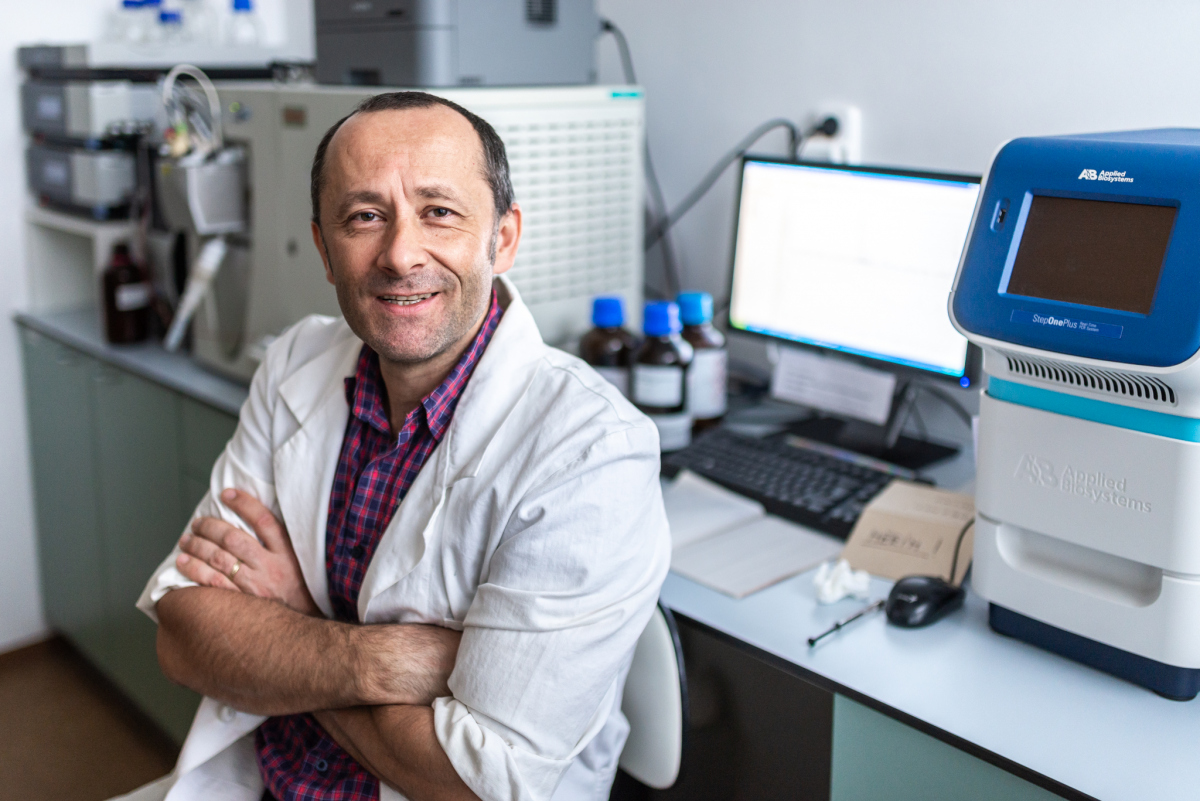
You mentioned polymer vaccines. How can we imagine them?
Both antigens and adjuvants that are important for the functioning of a vaccine are bound to a polymeric carrier. Adjuvants are often the cause of unwanted side effects, and binding them to a polymer is intended to help reduce these side effects. The polymer allows for controlled delivery of all vaccine components in a single “package” to the target location – improving pharmacokinetics, streamlining interaction with immune system cells, ensuring long-term efficacy, and minimizing side effects. Vaccines prepared in this way can be used both in the prophylaxis of infectious diseases and in the immunotherapy of cancer. Data collected from animal models is encouraging, but the path to clinical use is obviously long and challenging.
Another project is the Use of Stem Cells and Biomaterials in Cell Therapy.
This group is pursuing several research directions. For example, they are exploring the possibilities of treating the central nervous system with stem cells, polymeric hydrogels, and microRNAs. In addition, they are developing organoids, three-dimensional model systems that mimic the micro-environment of an organism.
In this way, we can create a model of the blood-brain barrier for drug testing, to mention just one example. This is something that cannot be studied in traditional tissue cultures. These three-dimensional systems make it possible to perform many experiments that would otherwise have to be done in vivo. This accelerates the time necessary to conduct research and reduces the suffering of experimental animals. Research cannot completely eliminate this, but they will only come into play in samples for which we have good reason to believe will actually work.
The programme also includes the Bioartificial Structures project for the replacement and regeneration of damaged tissues. So again, a combination of synthetic and biological structures?
Yes, one of the goals is to develop small-diameter artificial vascular substitutes. Larger vascular replacements are commonly available, but in smaller sizes there is a problem with blockage. Therefore, this research group is working on new synthetic and biological materials that serve as “scaffolding” for cell growth.
We can create this “scaffolding” via the 3D bio-printing method. Another area of research is the modification of metallic materials used for tissue substitutes. The aim is to modify their surface to minimize undesirable interactions with an organism and, on the contrary, to enhance desirable interactions – for example, to ensure that an implant grows properly into bone tissue.
The latest research project is Stem Cells in the Epidermis and Their Use in Cell Therapy.
Research into skin stem cells has led to the discovery of the importance of fibroblasts for tissue healing. It has been shown that specific fibroblasts are also very important, such as in tumour tissue, helping its growth by creating a suitable micro-environment. For that reason, the group is now focusing on researching this micro-environment and how it can be modified in an effort to reduce tumour growth.
The programme also includes a Cleanroom Laboratory. What is its purpose?
It is our connection to the commercial sphere. It serves both BIOCEV staff and external collaborators. It allows the results of basic research to be transformed into the production of potentially interesting materials under conditions and levels of quality that are precisely defined by standards.
Source: Magazine Vesmír, Ondřej Vrtiška

